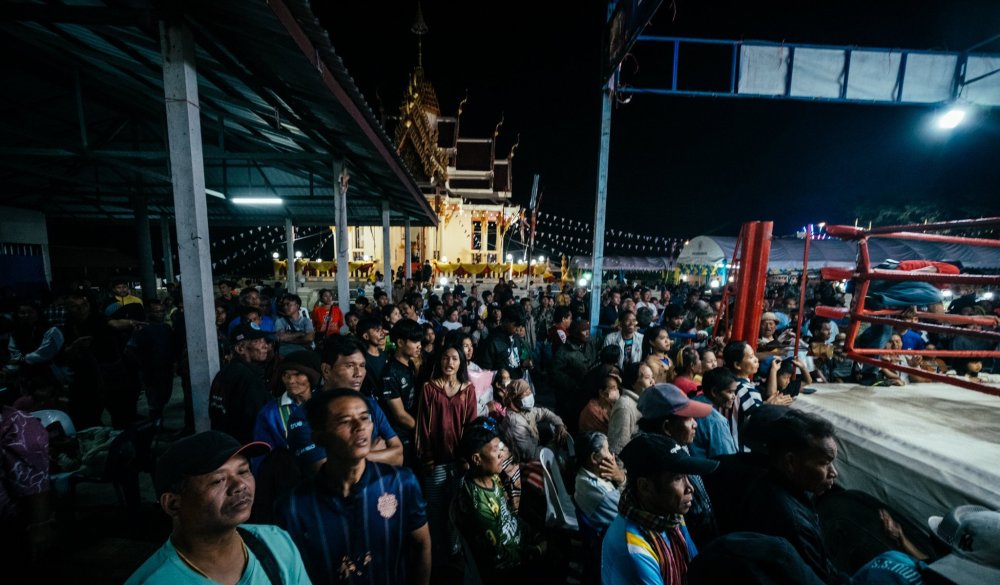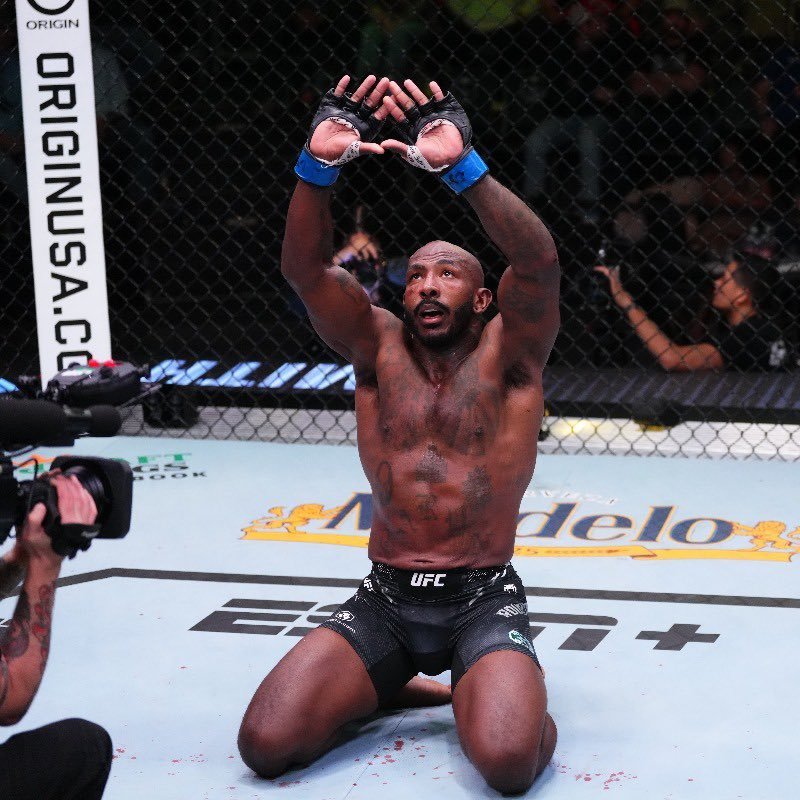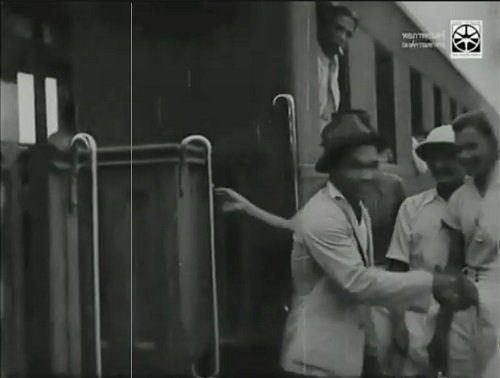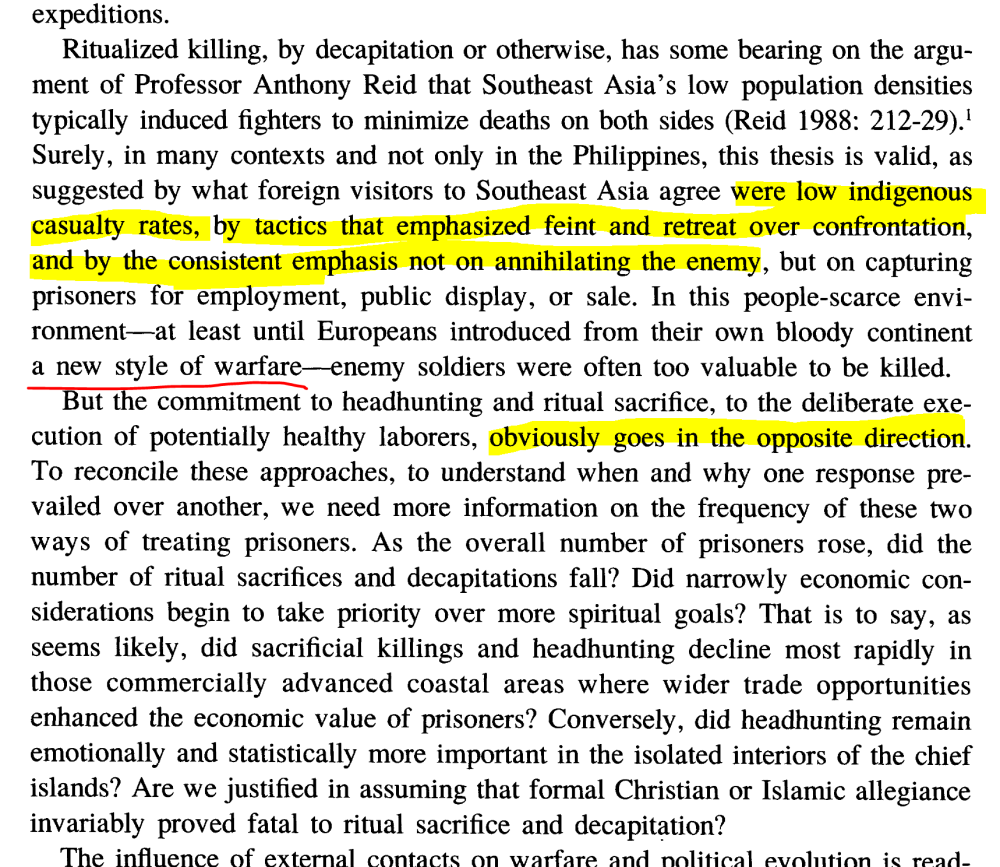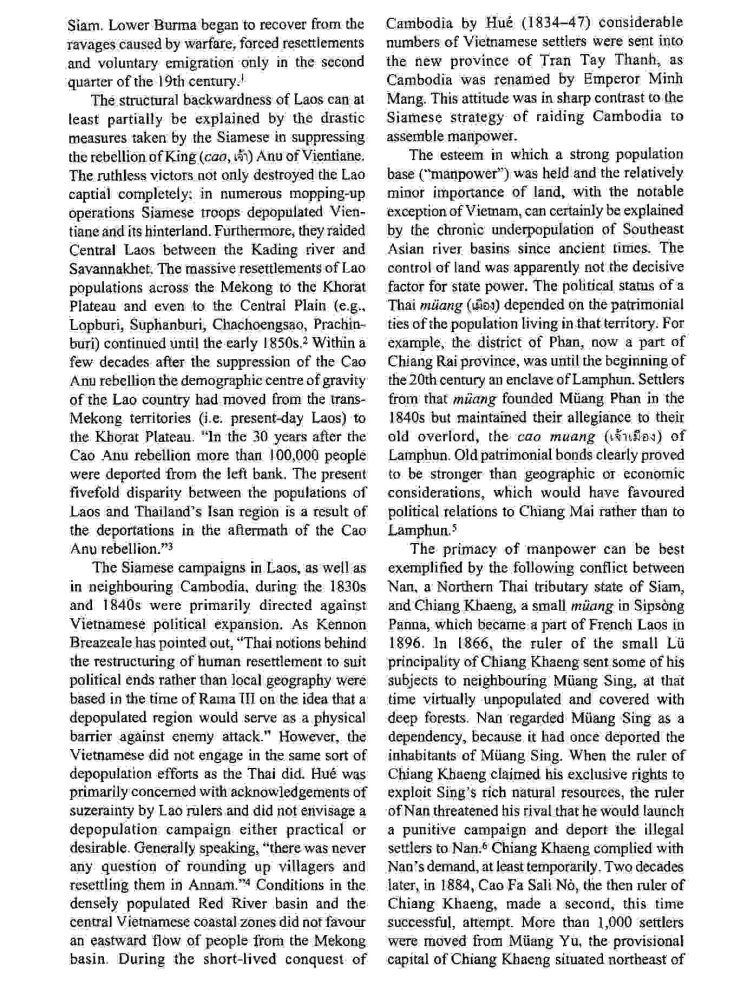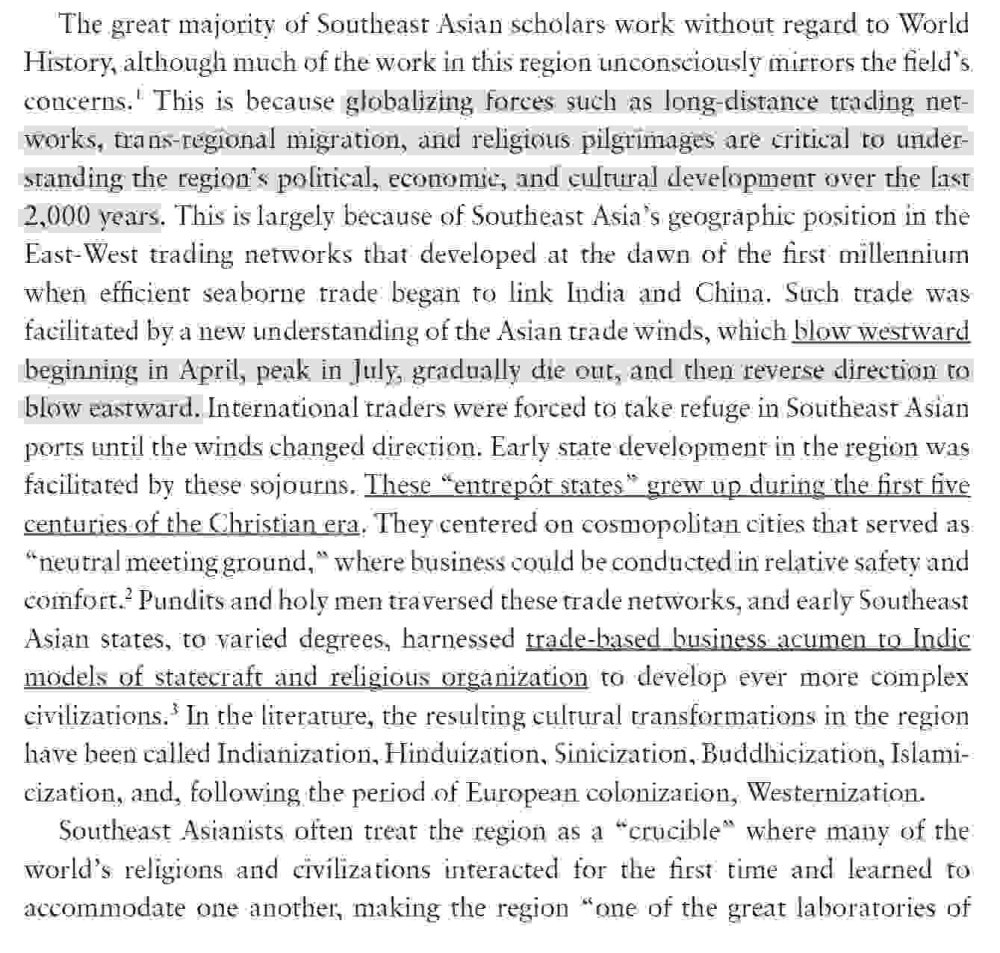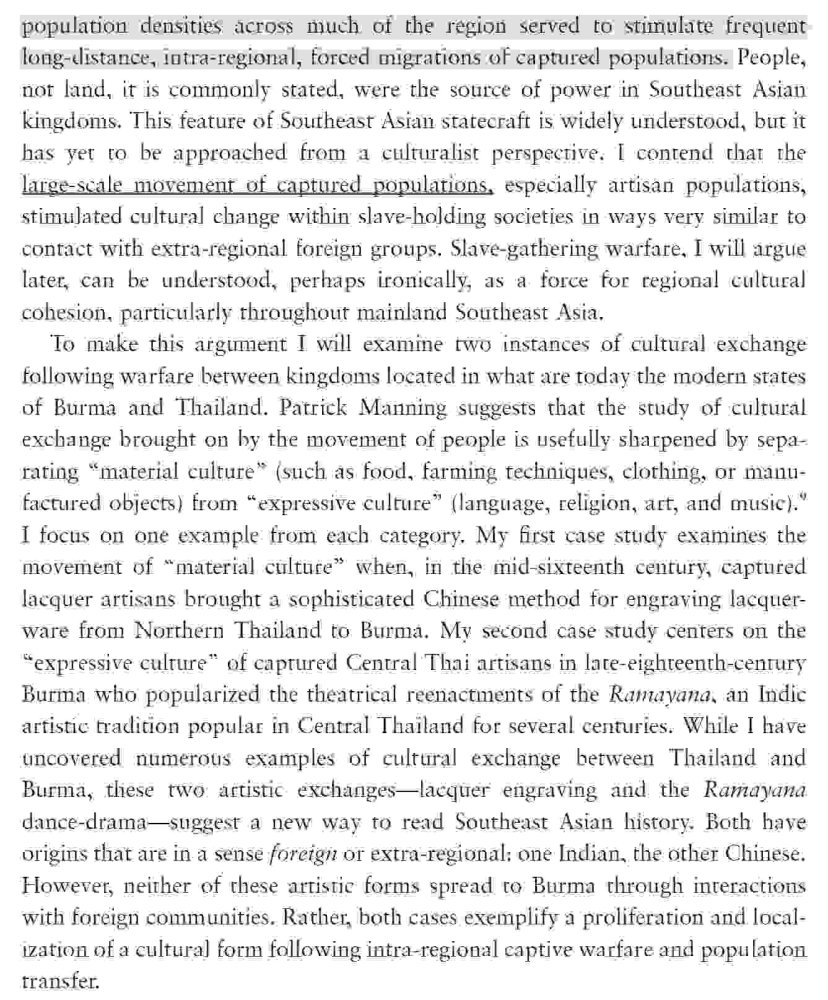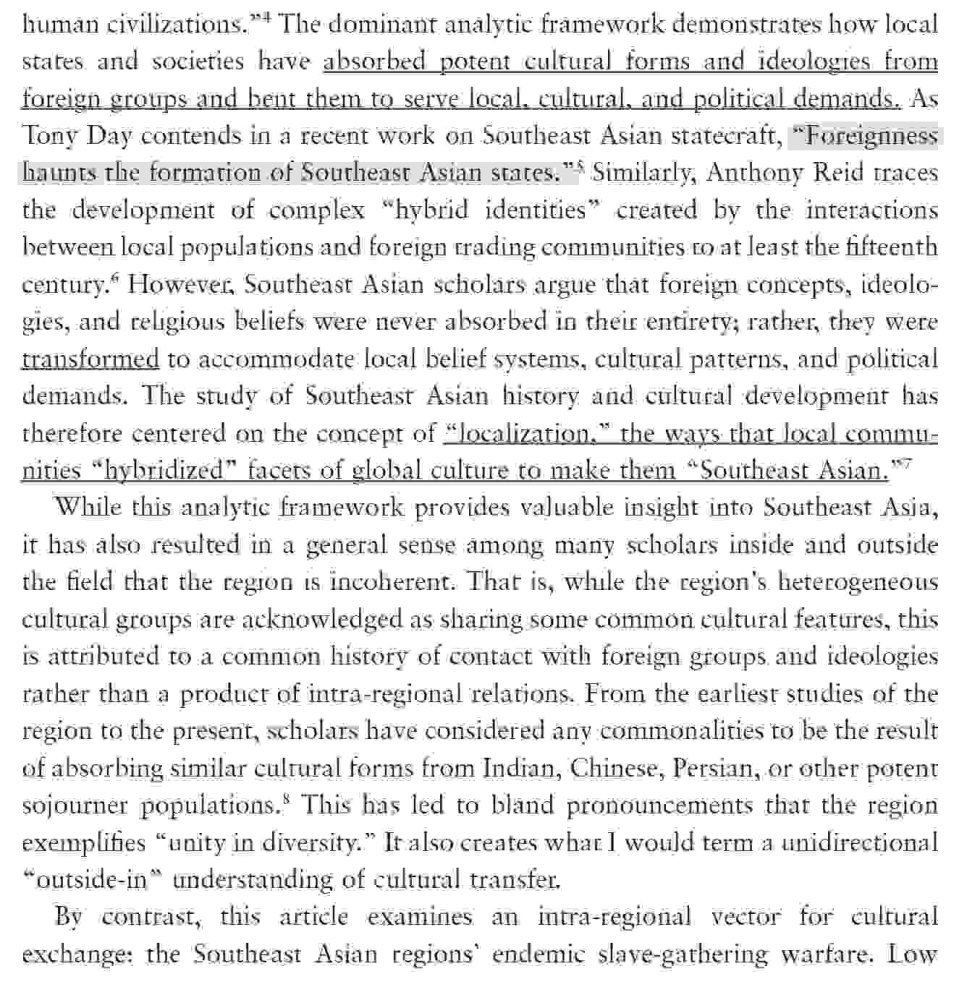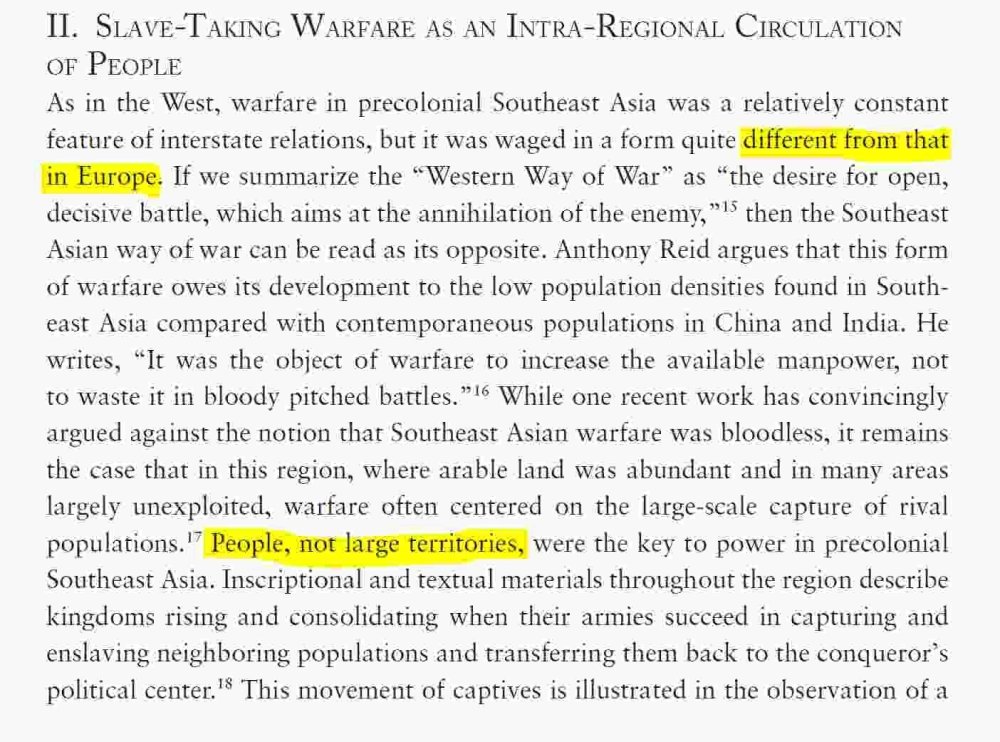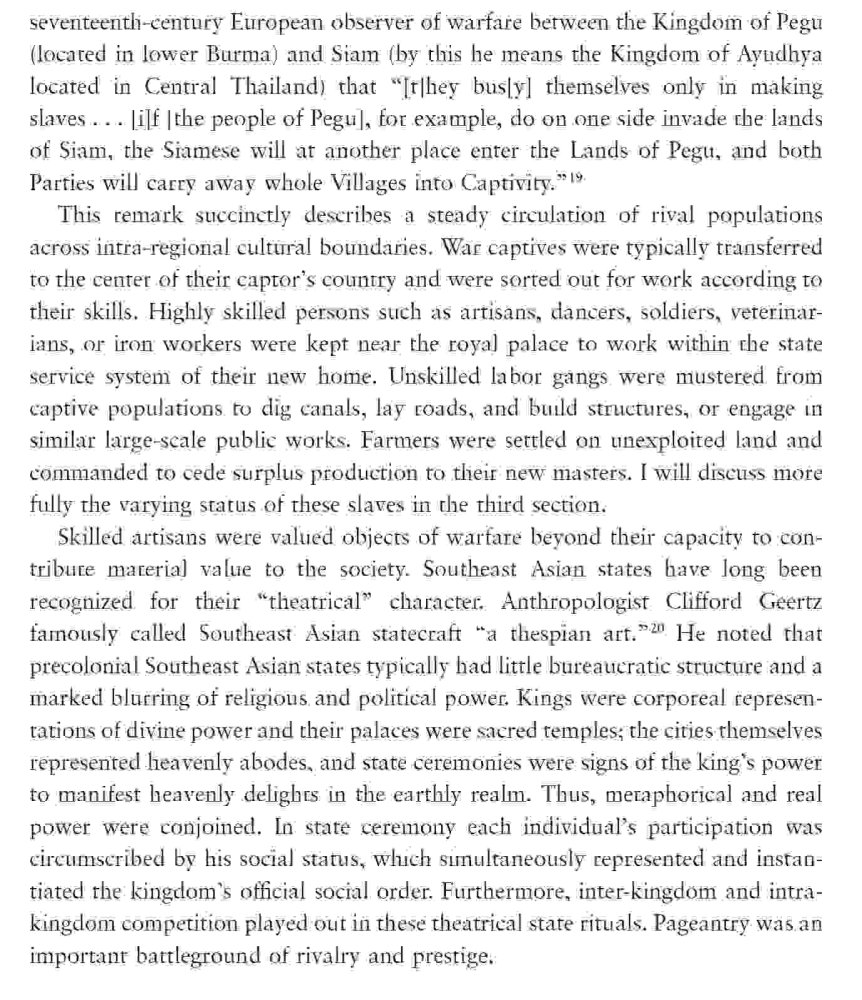-
Posts
2,252 -
Joined
-
Days Won
496
Everything posted by Kevin von Duuglas-Ittu
-
You can look through my various articles which sometimes focuses on this: https://8limbsus.com/muay-thai-forum/forum/23-kevins-corner-muay-thai-philosophy-ethics/ especially the article on Muay Thai as a Rite. The general thought is that Thailand's traditional Muay Thai offers the world an important understanding of self-control in an era which is increasingly oriented towards abject violence for entertainment. There are also arguments which connect Muay Thai to environmental concerns.
-
There is no video keeping. Patrons get access to the Library, according to tier. $10 subscription will give you access to the entire 140+ video Library, and everything else published (like technique vlogs, podcasts, etc), as long as you are a patron. $1 gives you access to the last 5 sessions we've published, but these keep changing. The truth is that we don't update the tiers very quickly, so right now the $1 tier has the last 11 sessions we've published. But once updated it will be only the 5 most recent. You can see the tiers and their sessions always here, in the Table of Contents: https://www.patreon.com/posts/muay-thai-uncut-7058199
-
Just very briefly I want to take up one of the most interesting aspects of the fighting art of Thailand's traditional Muay Thai, an aspect that really cues for me how I watch fights and weigh the skills of fighters. Managing distance. Many people watch "strikes" and look for "points", but there is an under-fabric to strikes, a kind of landscape of them, no less than how a topography will influence how a battle is fought between armies. Even the most practiced strikes rise and fall to opportunity, and in Muay Thai a significant determination of opportunity is distance. Above is a quick edit of Sylvie's last fight up in Buriram, bringing out all the significant moments of engagement, telling the story in about a minute. (The full fight should be up in a few weeks with Sylvie's commentary, as usual.) I'm going to start with Entertainment Muay Thai as presenting an negative can often be the best way to bring out a positive. Entertainment Muay Thai (and there are many versions of it, so we have to be very broad here), is largely principled by eliminating the importance of distance. What is sought, again being very broad, is a more or less continuous trading in the pocket. The quest is for an easy to follow, by the casual eye, "action". Everything is about the distance of the pocket. Setting up outside of the pocket can be regarded as anti-action (so, if you do, you should regularly charge into the pocket...and trade). And fighting through the pocket, to clinch range, is also devalued by very quick clinch breaks, scoring biases (changing traditional aesthetics). Clinch, which historically is featured in some of the most technical fighting of the sport, in Entertainment Muay Thai is more and more understood as a stall of the main goal. Pocket trading. Much of the art of Muay Thai is actually organized around all those distances that border "the pocket", controlling distance through length, or through grappling. In this fight Sylvie is giving up between 8-10 kgs (perhaps more than 20% of her body weight). Now, imagine it being fought under Entertainment aesthetics. What would it be if she just stood in the pocket, bit down, and just traded over and over with Phetnamwan? Would there be any point of such a fight? Yet, as the Golden Age legend Hippy Singmanee once said when criticizing hyper-aggressive, pocket-trading Entertainment Muay Thai, "Muay Thai is the art where small can beat big." Hippy was one of the most renown undersized fighters of the Golden Era. He knows of what he speaks. This fight, in the broad brush, illustrates some of that. More and more we've come to realize that as traditional Muay Thai evaporates slowly from the urban stadia, the only traditional Muay Thai still being regularly fought is in the provinces of the country. It is there that fights are scored in keeping with the art, and fighters retain the all around, multi-distance skills that make that art happen. Clinch is allowed to unfold. Narrative fight arcs are told as principle to scoring. Ryan, a knowledgeable commenter on Twitter and a very good writer on the sport, right away noticed how the ref let clinch flow. You can see some of our discussion there. I recall a conversation I overheard when attending the funeral of the legend Namkabuan in Nongki. It was the passing of one of the greatest who ever fought. During the day-before cremation a casual conversation arose between other legends of the sport, and very experienced news reporters, people who had been a part of it for decades. One of them insisted, Muay Thai no longer existed in Thailand. Others knowingly nodded their heads. But a Muay Siam reporter objected. "No...it still lives in the provinces." And the others agreed. It still was there. We in the English speaking world tend to think the substance of something is what has been presented to us. The Muay Thai of Bangkok is the real Muay Thai of Thailand because that is what we see...and, historically, many decades ago, it did represent the highest skills of the country. But what largely remains unseen is that more and more of the sport is being designed for our eyes. It is less and less for Thais, and more and more for "us", so we can become quite disconnected from what is real and authentic in a cultural, and even efficacy sense. There rhythms and values of provincial Muay Thai, as it is fought, coached and reffed, are part of the rich authenticity of the sport which falls into the shadows when we just look at what is being shown to "us". This fight, how it is fought, shows "the art of where small can beat big", and it shows why. It's through the control of distance. If you are small you just cannot stand at range. You either have to explore the bubble outside of the pocket, too far, or at its edges, and fight your way in to score...or, you collapse the pocket, smother the strikes, and possess the skill to control a much larger bodied opponent. Clinch, historically, is kryptonite to the striker. Muay Maat vs Muay Khao battles are legendary in the sport. Classic. Who is going to impose the distance which is best for them? It's a battle of distances. And, for this reason, Muay Maat fighters of the past were not experts in trading in the pocket. They were experts in managing clinch fighters, or even high level clinch fighters themselves...and they were experts at hunting down evasive femeu counterfighters as well. Muay Maat fighters were strong. They had to have so many tools in their tool box. In versions of the sport where both fighters are forced to "stand and bang" repeatedly, we have been taken quite far from the glories of Thailand's Muay Thai fighters, and that is because Muay Thai is an art of distance control. This goes to a deeper point about the sport. It isn't really a "sport" in the International, rationalist idea of a sport. Muay Thai is culture. It is Thai culture. Thousands and thousands of fights occur on temple grounds, far from Western eyes. It has grown up within the culture, but also expressive of that culture. And it is a culture unto itself. The more we try to extract from this rich fabric some kind of abstract "rule set" and "collection of techniques" that can be used in other cultures, expressing their values, favoring their fighters, the more we lose the complex art of what Muay Thai is...and in the bigger sense move away from the value it has to the entire world. It's value is that it has a very highly developed perspective on distance management and on aggression. It has lessons upon lessons to teach in techniques of control and fight winning, woven into the DNA of its traditional aesthetics. And these techniques embody the values of the culture. It's all of one cloth. Sylvie has chosen the path less traveled. She's fought like no other Westerner in history (a record 271 times as a pro), and she has devoted herself to the lessor style, the art of Muay Khao and clinch fighting. There are very, very few women, even Thai women, who have seriously developed this branch of the art in the way that she has. And she's done it as a 100 lb fighter, taking on great size disparities as she fights. Because Muay Thai is "the art where small can beat big" there is a long tradition of great, dominant fighters fighting top fighters well above their weight, and developing their in style the capacity to beat them. Fighting up is Muay Thai. Sylvie's entire quest has been to value what may not even be commercially valued at this time, the aspects of the art which point to its greater meaning & capacity. The narrative of scoring, the control of distance, the management of striking through clinch, in the heritage of what it has been. I'm not saying that this is the only way to fight, or that Entertainment Muay Thai has no value for the art and sport. It's not, and it does. But, we should also be mindful of the completeness and complexity of Muay Thai, and the ways that those qualities can be put at risk, as the desire to internationalize it and foreign values become more and more part of its purpose. If we love what we discover when we come to Thailand, we should fight to preserve and embrace the roots of Muay Thai, and the honored aspects of the culture/s which produced it. photos: Khaendong, Buriram, Thailand (temple grounds)
-
Advices for gym in Pattaya
Kevin von Duuglas-Ittu replied to Yuan972's topic in Gym Advice and Experiences
Here's a Facebook page: https://www.facebook.com/BaanRambaaGym and another Facebook page: https://www.facebook.com/profile.php?id=100063547570660 and Rambaa's personal Facebook page (which is the most active): https://www.facebook.com/profile.php?id=100089593217773 -
Advices for gym in Pattaya
Kevin von Duuglas-Ittu replied to Yuan972's topic in Gym Advice and Experiences
If you are drawn to a big gyms then Fairtex (or Venom) might be your best bet. I'd just throw out there the idea of visiting Rambaa's gym if you'd like a unique experience. There's no other gym that's like it. First of all its one of the last kaimuay in Pattaya, a camp full of local Thai kids training for free, but they also have big fighters, like Peungluang who is undefeated on ONE. A few Westerners train there. It's a small gym, but it even has an MMA cage. Rambaa was Thailand's first MMA World Champion. It's just full of so many contradictions, and Rambaa himself is a great trainer, and has a wonderful fight style. I'm just adding this, in case you'd enjoy something that is unique. Here is an album of the photographs I took there not long ago: https://www.behance.net/gallery/166275057/The-Kaimuay -
I've heard he hangs out at a small gym (not as a kru or anything) that's near Samart's, at least a few months ago. I'm not really sure. He's a very itinerant person. He's not really "at" gyms, at least for long. Probably the best bet in Chiang Mai would be Hongthong, just because of the number of large Westerners that often train there (speaking only of reputation, we haven't been there for years).
-
If interested, there is a long history of shunning the knockout in traditional fighting sports, going back to Ancient Greece. I wrote about this in the post below, drawing possible parallels between Thailand's Golden Age low KO rates and Hellenic boxing. There can be a lot of debate on the role of violence in combat sports as both entertainment and edification (presenting some higher value to public fighting).
-
As Muay Thai promotions in Thailand tap into the hyper-violence visuals of MMA, modifying their rules and scoring trying to capture the MMA casual audience, promoting viscous knockouts and knockout rates with size mismatches & much sought bonuses, its Old School "don't hunt the knockout" ethos of its Golden Age and beyond has seeped into the UFC. Here Khalil Rountree who has trained a great deal in Thailand and expressed a great deal of respect for the art does a mercy finish (he's been known to not show restraint in the past), satisfied with a symbolic show of dominance. As has often been pointed out, Thailand's Muay Thai has been about dominance, not aggression. The dramatically raised slow fist here even somewhat invokes the executioner's strike that can be found in some traditional pre-fight Ram Muay. He then, post-victory, performed a modified Wai Kru (respect to his teachers), showing how intentful his performance was. The wai kru was nearly removed from some entertainment promotions in Thailand. It's a beautiful thing to see MMA in some way kind of "catch up" to Thailand's Old School respectful fighting and dignity, while Muay Thai is busy trying to catch up to MMA. via Sean Madden There has been quiet, growing concern over the new damage seeking forms of Muay Thai. Everyone loves the bonuses and the pay, but not only is the long term care and concern for the fighters an issue, older generations worry about Thailand's Muay Thai losing its ethos, its way of being, as it seeks more eyeballs across the globe. It's no small thing for Rountree to end a fight like this, in a display of values. It shows that Thailand's Muay Thai, as it traditionally has been, has something to say to contemporary combat sports beside what cool elbows, kicks or trips one can do. It's a centuries old sport of great violence, but its culture traditionally has carried with it principles of restraint and control, principles exemplified in its scoring (which Westerners sometimes have a hard time understanding), making its deeper value its greatest gift to the fight world. There is of course much to socially criticize in Thailand's Muay Thai as it has historically developed, the conditions and liberties of fighters, their economic well being, disparities and injustices of many kinds, but part of that history was also used to find and fashion a sport founded on restraint in the face of violence.
- 1 reply
-
- 1
-

-
Gym recommendations in the Philippines
Kevin von Duuglas-Ittu replied to Violence's topic in Gym Advice and Experiences
Info is probably hard to find, so I forwarded your question to Patrick Rivera, a USA coach who knows the Philippines. This is what he said: I hope that little bit helps!- 1 reply
-
- 1
-

-
New Film Evidence on Early Modern Muay Thai History The above video edit study of the best fighter in Thailand, Samarn Dilokvilas, is taken from one of the most remarkable film records of early modern Muay Thai. This post contains various treatments & edits of the archive footage, highlighting its aspects. Previously of the early modern period we've primarily had short very clips produced for newsreel, with opponents of unknown skill, edited to present to the foreign eye something exotic and unusual (a playlist of early modern Muay Thai footage here). With newsreels we never really know how much the action has been chosen and constructed, or how distortive that may be. The colonial British regarded Siam as comparatively "uncivilized" and the few glimpses of fight footage feel like they were chosen with that view in mind. They are brief, clashing keyholes into the art, but now read almost like puppet shows for theater goers, from a far away land. There was also a Thai filmed dramatic reenactment of a fight, which for some time was taken as genuine fight footage, the earliest on record. It suffices to say that before this film, our visual evidence for how Thailand's Muay Thai (Muay Boran) in its early modern period was fought was deeply fragmented and full of artifice. You can watch the full archive footage of the Samarn vs Somphong fight for the unofficial title of Best in Thailand, from which my edits are cut (the story of this fight and who the fighters were is further below): this footage originally was published in this longer Thai Film Archive. In this case we have lengthy, if significantly edited, fight footage purporting to cover all the rounds of a fight, as well as the showcase of some bagwork, sparring fight preparation and coverage of the historical context of the fight. And, the two fighters are thought to be two of the very best in Thailand, a showdown of great magnitude. It is far more than a keyhole. We get the sense that we are watching an actual, continuous fight from 1936. It gives us insight into the relationship between Thailand's Muay Thai and Western Boxing. You can see Samarn's Western Boxing influenced bagwork in this short edit, as well as an excerpt from General Tunwakom teaching the "Buffalo Punch" of Muay Khorat, which Samarn includes in his light work: The State of Early Modern Muay Thai and British Boxing Beginning with the first decade of the 1900s Bangkok itself was undergoing powerful modernizing influences, much of which embodied by its relationship with the British Empire. Bangkok was a deeply cosmopolitan, thriving Southeast Asian city. It has been estimated that there were as many 3,000 British serving with the Siam police in 1907. The future King of Siam, HM King Vajiravudh, who would modernize the sport would spend near a decade coming of age in Britain in college and military school (he would be given the honorary rank of General in the British army in 1915 and even thought to fight for the British in WW1). Regular Boran Kard Chuek fights were held at the city pillar (and likely in many other undocumented city locations), but there was no stadium or fixed ring in the city until King Vajiravudh came to the throne and implemented Western Boxing's influence. It was a gambling sport of the people whose gloveless, violent nature would ruffle British sensibilities. At a time when colonial powers were using the excuse of beneficently civilizing peoples of Siam's bordering countries as their governance was taken control of, British sensibilities did matter. When prince Vajiravudh's father, the famed King Chulalongkorn, formalized the three regional Schools of Muay Boran (Lopburi, Khorat and Chaiya, bestowing teaching authority to tournament winners) in 1910, he was not founding these styles, but rather consolidating them up (and to some degree secularizing) them as the sport itself was likely beginning to experience change in the face of Bangkok's modernity. This was an act of preservation and commandeering. Through the religious reforms of 1902 outlawing non-Thammayut Buddhism mahanikai practices the National government had begun discouraging customary Muay Thai pedagogies within the wat, moving it away from their magical practices. Fight wicha & magical wicha were likely seen both seen as fighting techniques. The aim was to put more martially trained men under royal auspices and in rationalized contexts. By 1919 British Boxing was taught along side Muay to police and all civil servants at Sulan Kulap Collage. The modernizing, internationalizing art of Judo was also offered. King Vajiravudh, returning to Siam to eventual ascent to the throne saw British sport as key to a society's modernization and Nationalization, and Muay Boran ring fighting was to be shaped to reflect the more rationalized (rule governed, safety concerned) character of British Boxing. The first fixed roped rings in Bangkok (1921, 1923) held both British Boxing fights and Muay Thai fights. you can see a Modernization of Thailand's Muay Thai timeline here It is enough to say that in the Muay Thai of the 1920s a modernization movement was significantly modeled on and inspired by British Boxing, and much of how Muay Thai is today comes from this modernization effort a century ago. But...did this influence change how fighters actually fought in these new rings? And if so, how much? Did Muay Thai/Boran on the one hand adhere to their own characteristics which were purposely counter to Western Boxing, pushing back to maintain its own identity resisting its influence? Or were fighters synthesizing Western Boxing with Muay Boran fighting styles? Was what was happening in the ring a combination, or an uneven example of both? We have so little visual evidence its really hard to say, but this one film (which actually seems to present two fights, more on that further down) is our deepest, most substantive look into the early history of modern Muay Thai as it actually was. My own feeling has been - and I should get that in front - is that while we may prefer to think of Thailand's Muay Thai has possessing its own pure lineage, tracing lines of of styles back even hundreds of years, the true nature of Thailand's Muay Thai is that it is, and has perhaps always been an absorbing art, a synthesizing art, which has taken numerous threads of influence and experience (including international influence) and woven itself into something absolutely unique: an at least 100 year old highly optimized, deeply tested ring fighting art. And substantive to modern Muay Thai has been its dialogue with Western Boxing from its inception in the early 1900s. Not only did British Boxing and Thailand's ring Muay Thai exist side by side in Bangkok, and not only was Muay Boran remodeled on the rules and engagements of British Boxing, but the fighters themselves fought in both sports. The cross-pollination was unavoidable, and probably in some ways quite effectively pursued. The 1936 Fight For Who Was the Best in Thailand: Samarn vs Somphong The fight in question in fact is purported to be for who was the best Muay Thai fighter in Thailand. I think the record is probably a little thin on this, but Alex Tsui provides a very powerful picture of the build up to this fight. Please read his original write up which contains many more details on it here. an excerpt: It was Samarn vs. Somphong III, fought at the Pattani Municipal Government Hall, on 29 April, 1936. Samarn Dilokvilas (career 1926-52), was the grand champion of Siam, from 1933 to 1939, and in those years, he was truly invincible and widely revered as a national hero. His rival, Somphong Vejasidh (career 1930-51) was the most dangerous puncher during the same period, being unbeaten all the way until he captured the 128-pound title at Suan Sanuk arena. A showdown with Samarn was inevitable. Samarn versus Somphong, the most fabulous arch-rivalry in muaythai (then called Siamese boxing in the western media) before the Second World War, enacted a total of six encounters stretching from 1933 to 1939, each a classic in its own right, that captured nation-wide interest and media coverage, in pre-war days of Thailand. Samarn had won the first showdown, an unprecedented ten-round muaythai match at the constitution celebrations, 1933, in what was always remembered by critics as one terrific epical battle. The rematch, in early 1934, was likewise very close, and Somphong managed to clinch a draw, at Suan Sanuk. Thereafter, both went separate ways abroad to campaign in pro boxing, which was a premier spectator sport on the international scene. Samarn fought in Penang and Burma, raking up a record of 9-1, having lost once to Young Tarley, but won the rematch. His last oversea outing was a knockout victory, in four rounds, against George Goudie, lightweight champion of Burma, on 14 October, 1935. Samarn’s ring savvy was so tantalizing that the media in Penang had given him the rather adorable title “Gentleman of Siam”. Somphong’s overseas campaign was just as enviable. A 10-1 record in Singapore (Asia’s most popular boxing hub right up to the 50’s), all against proven pugilists on the international circuit speaks for itself. His last outing was a kayo over Japanese champion Yoshio Natori in four. So, when the two top fighters of the kingdom were set to meet again, for the third time, it was national news, for the question after the two bitter battles had remained to be decided – Which of the two was the best fighter in Siam? So we have two of the best Muay Thai fighters in Thailand, arch rivals, facing off after each has also been a dominant professional boxer in the Southeast Asian boxing circuit. The two fighters embody, one could say, the acme of the sport as it was in relation to its modern inception in dialogue with Western Boxing. They are Muay Thai fighters and boxers. How would they fight? The fight is a remarkable document of the relationship between Western Boxing and Muay Thai in early modern Thailand. It's boxing influence is visibly pronounced. And, there is telltale Muay Boran presence as well. In my film-study edit of the style of Sarman Dilokvilas you can see the boxing footwork, the slips, the jabs, the angle taking, but also the reverse elbows, the throws, the spins, stance switching. It is an amalgam. There are some problems with the footage that I discovered in frame by frame study. The first of course is that it isn't' continuous. It has been edited to capture the "action". And, given the rest of the archive film, and its purpose, this seems likely done by someone who wasn't particularly knowledgeable about fighting (at least by class). This to me means the cut of the film itself probably left out a great deal of the art of fighting, the distance taking, the manipulation of tempo, moments of defense or delay. It presents a very clashy fight. It may have been like that, but editing is a powerful aesthetic tool, and to properly edit a fight take a knowledgeable eye. This is to say, this footage in my view likely suffers some from the same interpretative problems as Newsreel footage. Compounding this problem, the edit itself reuses action sequences, repeating them at different times in the fight, sometimes cutting them into different rounds. I started documenting these by timestamp, but as their number grew I just left it to another day. This just adds to the artificially constructed, and perhaps mis-representational nature of the film, not something that would be immediately apparent. above an example of many repeated action sequences This being said, there is still a lot left on the bone. Lots of techniques and exchange moments. Editing these clash-like exchanges into quick repetitions and a slow motion copy (the video at the top of this post) is to help reveal both their technical nature and to capture their rhythms (removing them from the master, original film edit, whatever it's intention). It seeks to catalogue the fighting techniques of Samarn Dilokvilas, who purportedly was the best Muay Thai fighter in Thailand. How much of a window into the state of 1930's Muay Thai does this fight between Samarn Dilokvilas and Somphong Vejasidh give us? These are both fighters who moved to the professional, international boxing circuit after dominating Thailand's Muay Thai, to great acclaim (mirroring the career patterns of later World Boxing Champions Saensak in the 1970s, Samart, Samson, Weerapol in the 1980s and 90s). They fight with a boxing influence. Sarman on the bag looks like a boxer, again: Did much of Thailand's Muay Thai reflect this? Or was this pocketed knowledge. A small piece of evidence toward understanding this is also found in the archive film. There is another fight in the footage, also edited for action (also with duplicated sequence cuts). It looks like it was a pre-fight show the day before the big fight. You can see that the rope configuration is different, with only two ropes instead of three. So these fighters may very well be important Muay Thai fighters in the Pattani (southern Thailand) scene. While the Sarman vs Somphong fight edit features very little clinch or grappling, this fight as it was edited is almost completely clinch and grappling, peppered with clashing entry strikes. Clinch breaks are still very quick, there is little fighting for position, but we really don't know how much this presentation has been manipulated by the editor of the footage. He might very well have liked to produce a contrast between the two fights, aesthetically, and may have cut out a lot of the art of the fight as boring to non-fight fans. Early Modern Muay Thai and Grappling How much clinch or even grappling (with a possible Judo influence?) was in Thailand's Early Modern Muay Thai is an interesting question. A 1922 Australian news report says that while throws are permitted, clinching is not, while it is unclear how clinch. This possible prelim fight which is filled with grappling-type action is perhaps the best evidence for the role grappling played in some Muay Thai contests in this era. Here is a slow motion edit of those clash entry grappling exchanges, as well as the complete archive footage of the fight: Conclusion What we are left with are two Muay Thai fights, one that features two of the best in Thailand which is quite boxing heavy in style, and the the other a possible prelim fight that is predominately grappling and clash entries. Two very different "Muay Thais". My own suspicion is that Muay Thai in the 1920s-1940s was very eclectic. When the railroads were built in the first decades of the 1900s the diverse knowledge of provincial Muay Thai and its fighting styles were suddenly becoming more connected. Chiang Mai and Lampang fighters could much more readily fight fighters of Pattani and Nakhon si Thammart in the South, or Khorat in Issan. The melting pot of the railroads, nexus'd in Bangkok, but actually in various hubs (this significant fight was in Pattani) must have produced a great influx of new fight knowledge, with styles interacting with styles. It is notable that the symbol of modernization, the train, features prominently in the film, and there are no Thai "wais" in that footage. Everyone is shaking hands proudly in a Western manner. Modernization. If we add in that Bangkok itself, the heart of Thailand's modernization and growing Nationalism, Boxing in part a symbol this internationalizing standard, at first by the King himself and other royal elites, but then systematically within the Thai government, police and civil service. Thailand was encircled by a Southeast Asian professional boxing circuit, born of regional colonialism, in Burma, Singapore, the Philippines, and international boxing surely represented the world standard of fighting within Thailand. It was honorific for Thailand's Muay Thai fighters to succeed in the Southeast Asian circuit, and Thai fighters likely successfully boxed abroad before even the turn of the century. In thinking about the state of Thailand's Muay Thai in the 1930s we must consider these flows of people, from the provinces into Bangkok via railroad, the outward international interaction with the Southeast Asian boxing circuit, and place that Boxing held in the royal and government concept of modernization itself. At this time Muay Thai was rich, eclectic and evolving, full of cross-influences, but also likely held areas of strong resistance, local knowledge bases which preserved and hardened themselves in terms of identity. It was as true mixed martial art ecology of fighting.
-
Continuing a bit with my footnotes and further reading, here is an interesting passage which speaks to the head hunting practice in the Philippines (a practice that is thought to be a warfare logic that was fairly common in pre- and early history mainland SEA, though becoming marginal in the rise of the city state), something that I've discussed in my treatment of the logic of Soul Stuff. from Some Comparative Thoughts on Premodern Southeast Asian Warfare Victor Lieberman Journal of the Economic and Social History of the Orient, Vol. 46, No. 2, Aspects of Warfare in Premodern Southeast Asia (2003), pp. 215-225 (11 pages) V. Lieberman rightly points out that SEA in the Anthony Reid hypothesis, faces a counter logic in its own history of warfare, and interrogates it with a series of prospective questions.
-
Continuing from the article above, The primary result of warfare in Siam was that a village, a tow, wld be marched as slave labor en masse to a new location in proximity to the victor's land. There were constant forced migrations that often involved harsh marches. This is 1 reason why warfare could involve evasion. For this reason capture & surrender often involved strategic assessment from the nobility, towns caught between major powers. Escape into the forests was a option for the common folk. The conclusion paints a vivid picture of the kinds of choices that faced the towns and villages that would be relocated to the Chiangmai region of Lanna. Continuous warfare instability, famine, tigers and bandits.
-
Thank you so much! Glad you are getting a lot out of the material. Your trip sounds fantastic, and you've picked some great mentors to train with. I don't know much about the private training situations, but I do think with Burklerk you should stay with whatever accommodations he has as Lampang can be spread out. And Sagat isn't at 13 Coins which closed a while ago. He trains privately in various gyms, often at Jaroenthong's gym in BKK. Sylvie helps book privates for him. I suggest contacting her through Instagram.
- 1 reply
-
- 1
-

-
Chamuakpet's Switch
Kevin von Duuglas-Ittu replied to Carter's topic in Muay Thai Technique, Training and Fighting Questions
It's awesome to hear you studying the fights of Chamuakpet. I haven't looked at them closely in a while so I couldn't say, but I like your idea that he's tracking the openside with his knee. Karuhat's switches seemed to be score relevant, closing the openside when he had the lead, etc.- 1 reply
-
- 2
-

-
footnotes. More on the transitory, seasonal migration of culture in SEA. Not only the patterns of tradewinds, but also large scale slave captures in warfare. Not only was there a continuous cultural mix from external cultures, slave warfare was constantly stirring the influences within SEA itself. "Southeast Asian Slavery and Slave‐Gathering Warfare as a Vector for Cultural Transmission: The Case of Burma and Thailand" (2009) and then a restatement of the Anthony Reid thesis with detail on slave management by skill:
-
More footnotes to the thesis that war was essentially labor capture, and that this was extremely wide spread. In the 1830s Chiang Mai (region) population was reported to be 3/4s comprised of war slaves. from "Of Corvee and Slavery: Historical Intricacies of the Division of Labor and State Power in Northern Thailand", Katherine Bowie
-
In interested in the principle of Soul Stuff, as expressed in religious/spiritual/political terms, this article on Barami, and the reforms that the first monarchs of Bangkok Siam made is an excellent, detailed capture, if you wade through the historical details. The King viewed as embodying, or pursuing the Ten Perfections: THE VESSANTARA JATAKA, BARAMI, AND THE BODHISATTA-KINGS: The Origin and Spread of a Thai Concept of Power << JSTOR This royal, rarefied bodhisattva Buddhistic Barami is, I believe, connected to the much older martial Barami of Kings and chieftains, which finds itself expressed in culturally still through the values of charisma, and in Muay Thai still. From the introductory paragraphs: And from the conclusion:
-
and later from "Siam’s Colonial Conditions and the Birth of Thai History" Thongchai Winichakul A bit more support of the notion that Siamese battles were personified moral contests, at least from the historical perspective. Further up in this thread this is discussed in terms of representational, ritualistic combat, a logic of combat that at least to me likely played out on the local level of betting, provisional Muay Thai over centuries: combatant as substantive representative for a community or clan. For more thoughts in this direction see, this theory on the Spiritual logic of Thailand's Muay Thai:
Footer title
This content can be configured within your theme settings in your ACP. You can add any HTML including images, paragraphs and lists.
Footer title
This content can be configured within your theme settings in your ACP. You can add any HTML including images, paragraphs and lists.
Footer title
This content can be configured within your theme settings in your ACP. You can add any HTML including images, paragraphs and lists.

